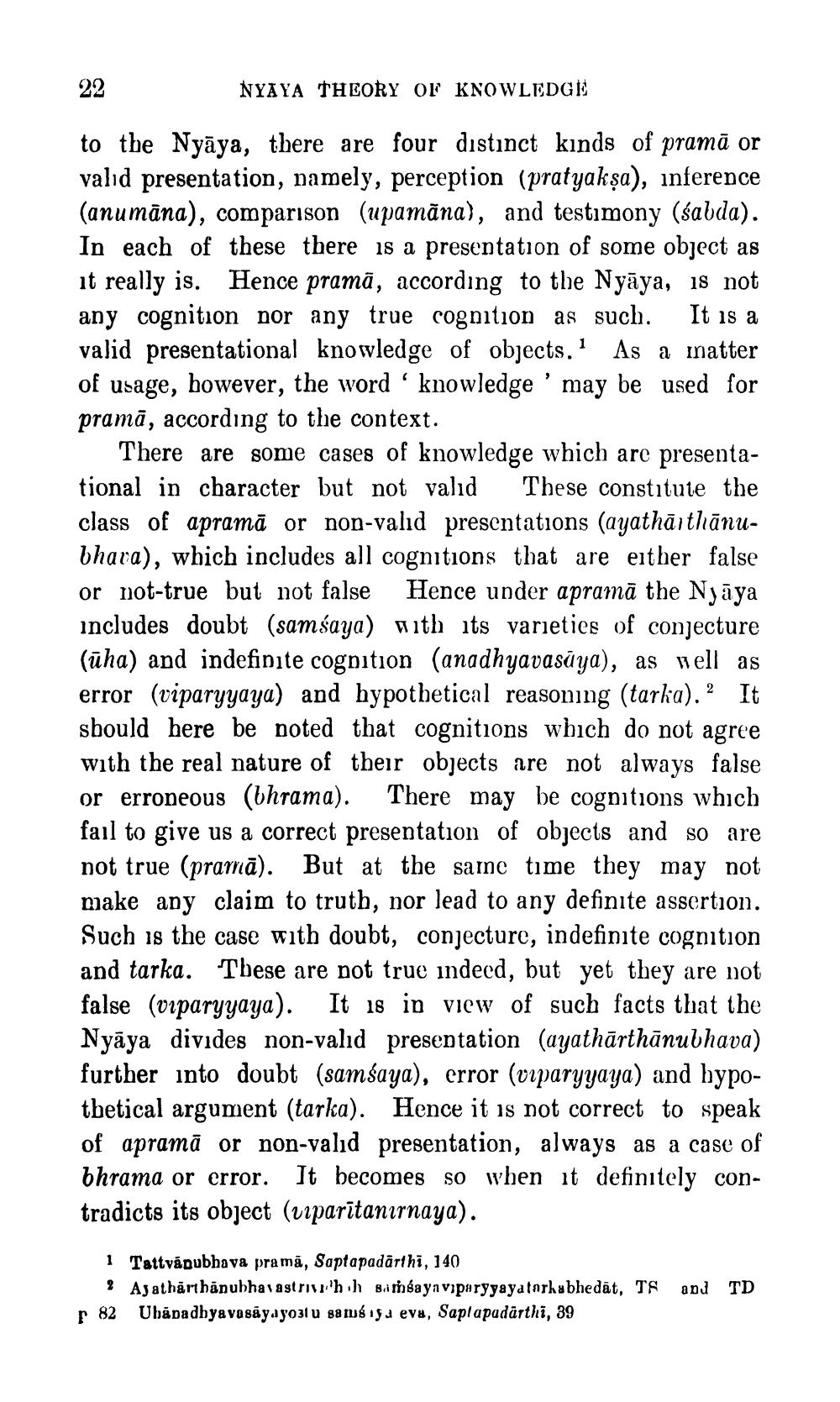________________
22
NYAYA THEORY OF KNOWLEDGE
to the Nyaya, there are four distinct kinds of pramā or valid presentation, namely, perception (pratyakṣa), inference (anumāna), comparison (upamāna), and testimony (śabda). In each of these there is a presentation of some object as it really is. Hence pramā, according to the Nyāya, is not any cognition nor any true cognition as such. It is a valid presentational knowledge of objects.1 As a matter of usage, however, the word' knowledge' may be used for prama, according to the context.
There are some cases of knowledge which are presentational in character but not valid These constitute the class of apramā or non-valid presentations (ayathāithānubhava), which includes all cognitions that are either false or not-true but not false Hence under aprama the Nyaya includes doubt (samsaya) with its varieties of conjecture (uha) and indefinite cognition (anadhyavasaya), as well as error (viparyyaya) and hypothetical reasoning (tarka).2 It should here be noted that cognitions which do not agree with the real nature of their objects are not always false or erroneous (bhrama). There may be cognitions which fail to give us a correct presentation of objects and so are not true (pramā). But at the same time they may not make any claim to truth, nor lead to any definite assertion. Such is the case with doubt, conjecture, indefinite cognition and tarka. These are not true indeed, but yet they are not false (vıparyyaya). It is in view of such facts that the Nyaya divides non-valid presentation (ayathārthānubhava) further into doubt (samsaya), error (viparyyaya) and hypothetical argument (tarka). Hence it is not correct to speak of aprama or non-valid presentation, always as a case of bhrama or error. It becomes so when it definitely contradicts its object (viparitanirnaya).
1 Tattvanubhava prama, Saptapadarthi, 140
? Ajatharthanubhavastrivihh samsayaviparyyayatarhabhedat, TS and TD Uhanadhyavasayayoзtu samsiya eva, Saptapadarthi, 39
r 82




